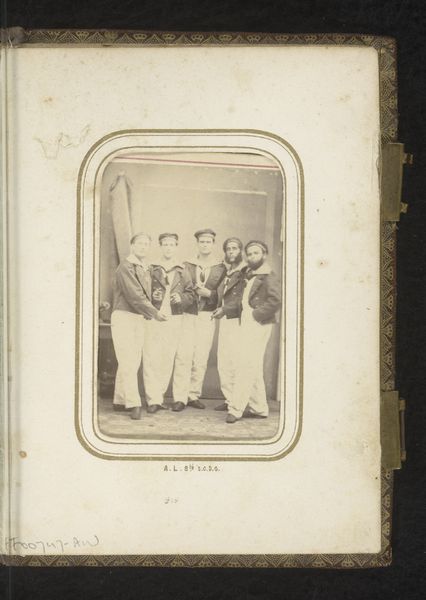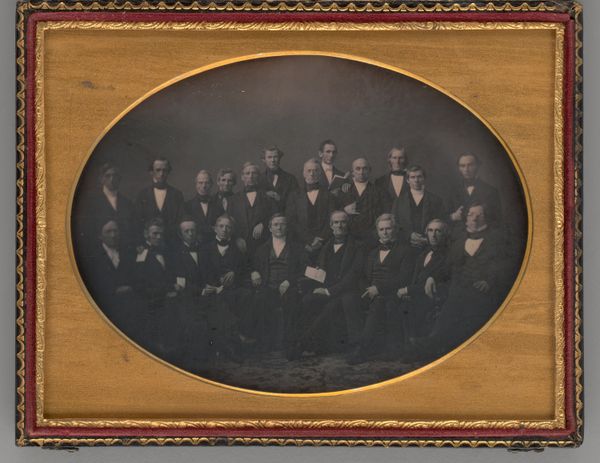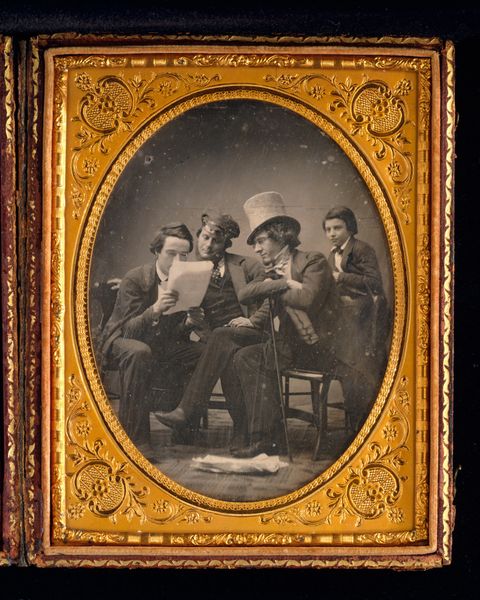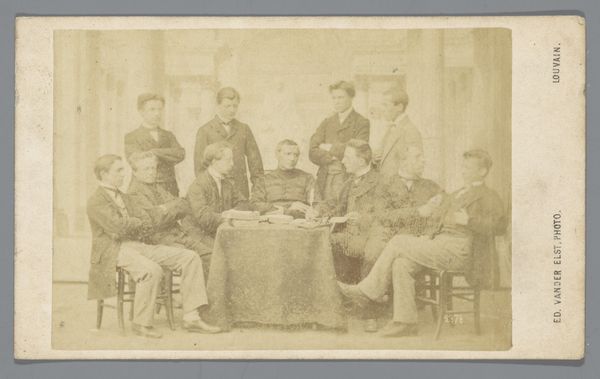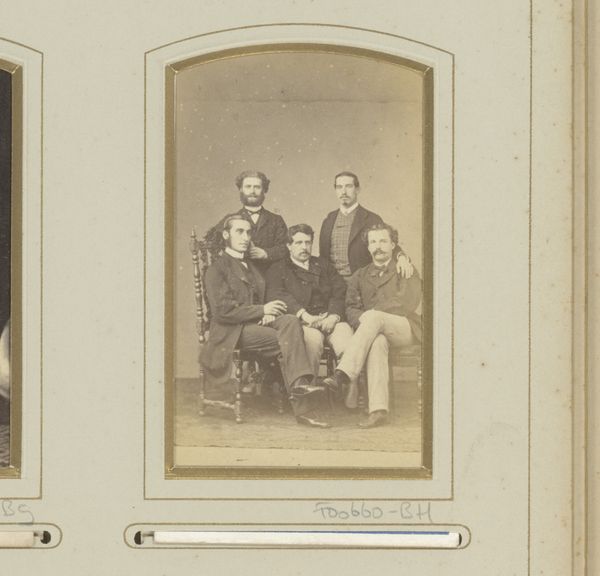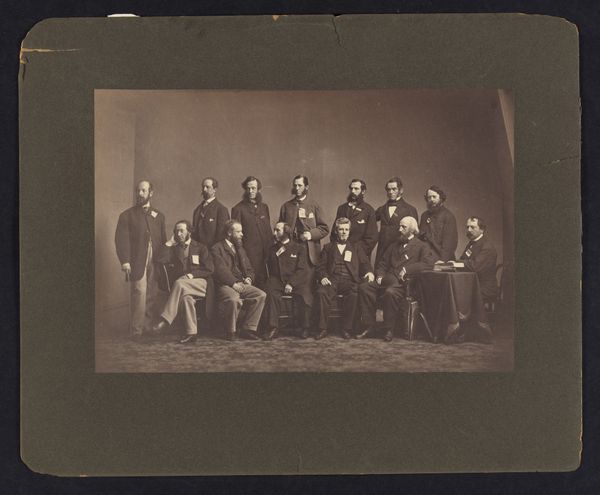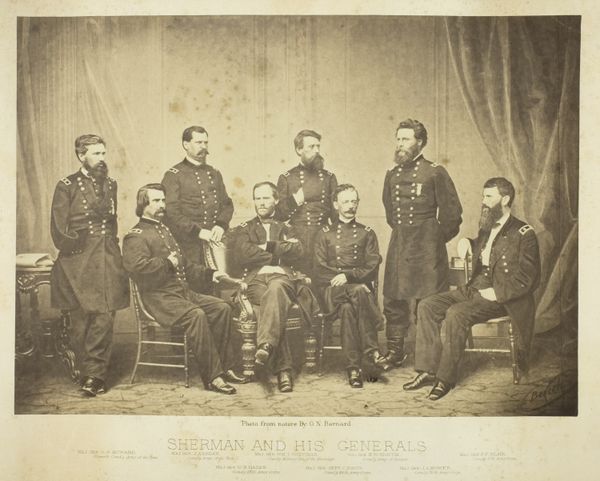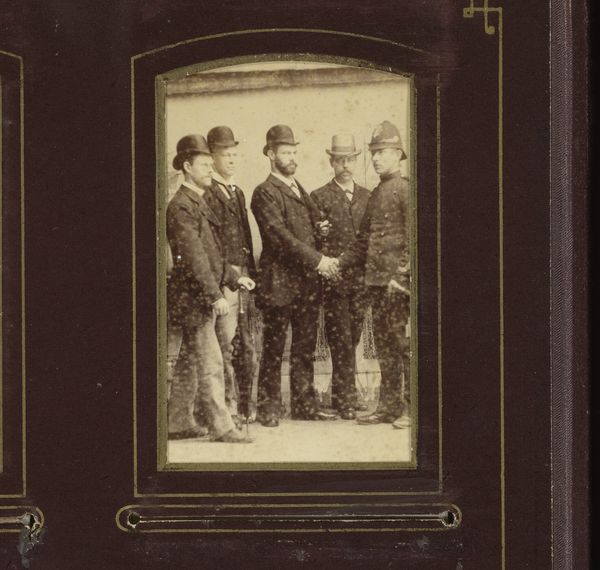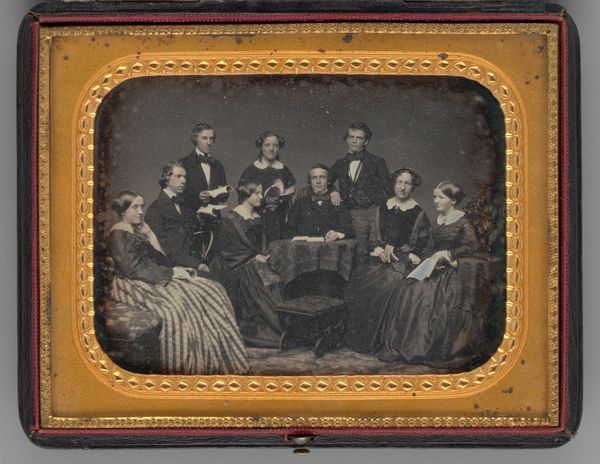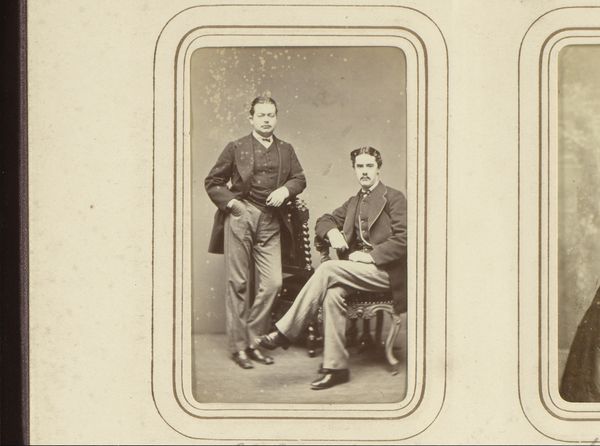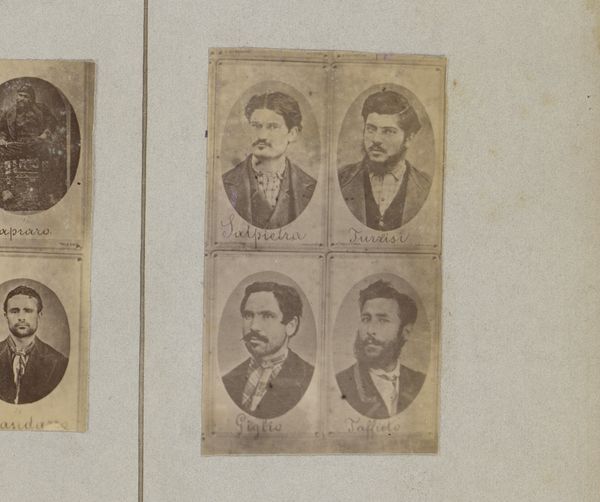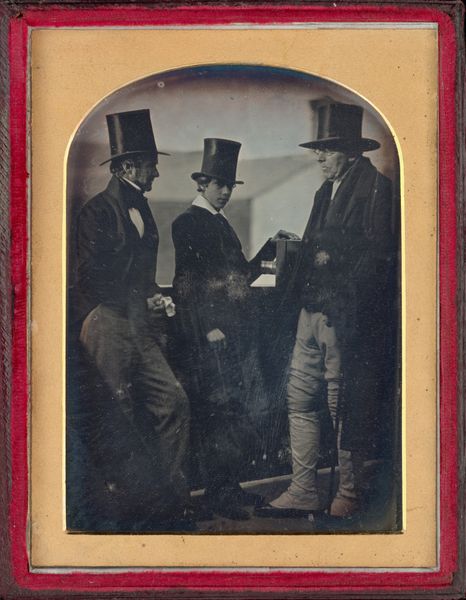
daguerreotype, photography
#
portrait
#
16_19th-century
#
sculpture
#
war
#
daguerreotype
#
traditional architecture
#
photography
#
group-portraits
#
united-states
#
academic-art
Dimensions: 10.8 × 14 cm (plate); 12.2 × 15.2 × 1.7 cm (case)
Copyright: Public Domain
Editor: So, here we have an anonymous daguerreotype from 1856, “Untitled (Eight Atalanta Crewmen)” housed at the Art Institute of Chicago. The mood feels...official, but also quite intimate, with all the detail a daguerreotype captures. What strikes you about it? Curator: What immediately grabs my attention is the self-conscious construction of masculinity on display. Consider the historical context: mid-19th century America, a burgeoning sense of national identity. Here, we see young men, likely part of a rowing club – judging by their uniforms and hats labelled "Atalanta." These clubs were highly social organizations linked to emerging elite social and political networks. Editor: Interesting. I hadn’t really thought about it like that. It seemed like just a team photo. Curator: It's more than that. The photographic technology itself was relatively new and instantly popular, reflecting a democratizing shift. However, early photographs such as this also allowed very specific groups within society to capture and control their representation. It's not just about recording reality, but creating an *image* of camaraderie, athletic prowess, and class belonging. The inclusion of the American flag too - do you see how subtly that strengthens their patriotic image? Editor: I do, it’s almost cropped out on the edge of the frame. So they're creating this picture of themselves, to reflect, maybe even broadcast a certain image that serves them, both as a crew and in society? Curator: Exactly. Think of the power that comes with that curated presentation, particularly when access to that form of imagery production isn’t broadly available. It creates an echo chamber that influences the public perception of power, status and civic leadership. Editor: I see it differently now. It's less a simple team portrait, and more a deliberate construction of identity in a young and rapidly changing America. Curator: Indeed, these carefully staged and costumed images of men who represent privilege echo a certain ambition on a much larger societal canvas. Thanks for making me consider how that era in American history impacts my understanding of portraiture and the institutions in place now that value such displays of ambition.
Comments
No comments
Be the first to comment and join the conversation on the ultimate creative platform.
